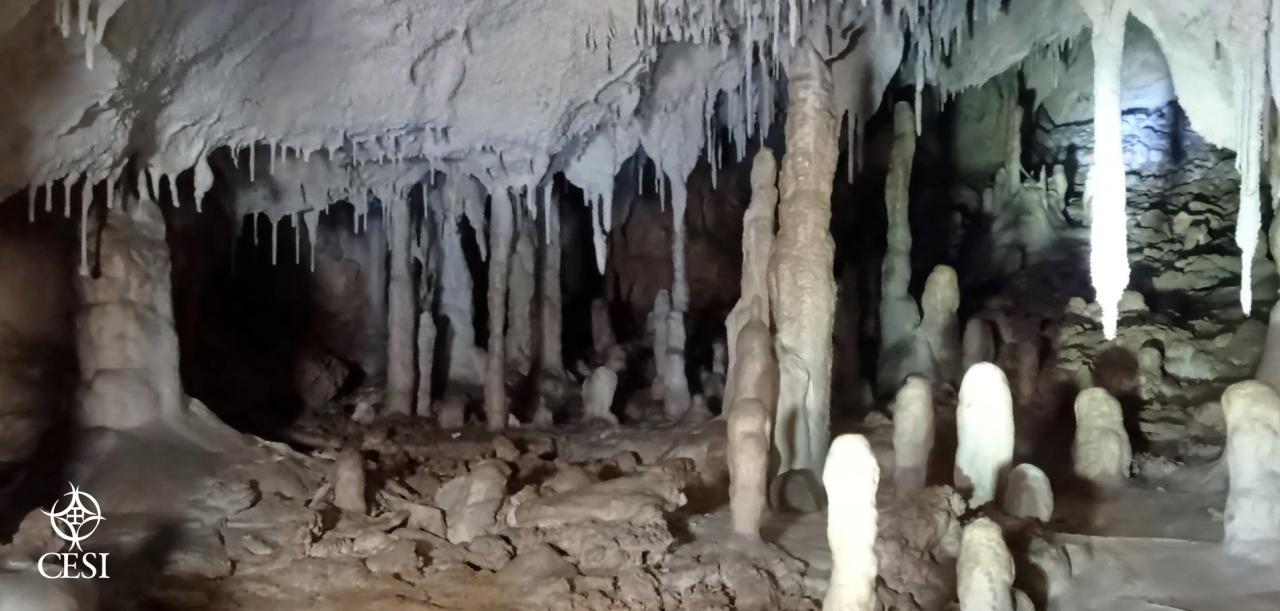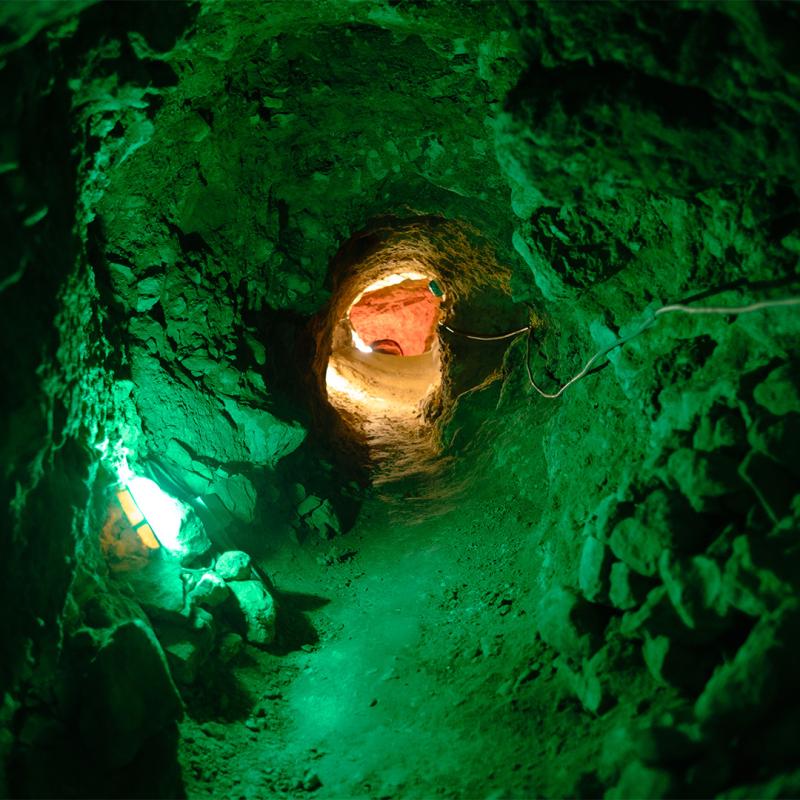The area of the Cesi massif features numerous cavities, many of which are located inside the village itself
The Aeolian Cave
This cavity develops naturally in the lower Lias Massive Limestone, dating back to the Mesozoic era.
To access the cave, it is necessary to go along an artificial tunnel for about thirty metres which is dug into the debris cover. Once inside, the morphology of the cave can be admired, revealing its origin of "forced conduit". In fact, the water flowing under pressure modelled the typical forms of the current on the walls.
The formation and evolution of the cavity were determined by the tectonic thrusts that created a dense network of faults and fractures in the mountain massif of Mount Torre Maggiore during the Pleistocene. Rain water started to chemically dissolve the calcium carbonate of the limestone rock, giving the first contribution to the slow karst phenomenon of the formation of pressurized underground water circulation.
Over the millennia, the water has been channelled towards the main collector, the largest fracture of the massif limestone, communicating with the outside. Here, thanks to the great water flow, the corrosive force of the waters added to the erosive one, the duct was considerably widened thus forming the cavity.
However, while the mountain was being transformed, important changes were taking place on the outside. Lake Tiber filled up and slowly dried up, while the climate changed and rainfall decreased. As a result, the waters left the main tunnels of the Aeolian Cave, drawn further down by the lower level of the water table.
The cavity, active for tens of thousands of years, thus became fossil, with most of the secondary tributary collectors blocked by the deposition of calcium carbonate dripping down and small spaces formed by the phenomenon of collapse. Furthermore, the accumulation of groundwater debris from the degradation of the overlying mountain slope closed the entrance to the cavity.
Only much later, curious hands, maybe following a strong and mysterious current of icy air coming from fissures of the cemented debris, restored the connection with the outside. Thus it was possible to penetrate inside this interesting cavity, which with its presence and forms reveals some aspects of an unknown past.
Devil’s Hole
Located close to the top of Mount Torre Maggiore, at 1114 a.s.l., on the northern slope of the mountain. It is a small cavity, with a horizontal development of a few metres.
Rocchetta Cave
Rocchetta Cave is located on Mount Eolo to the south-east of the St.Erasmo plataeu at 745 metres a.s.l. It is a vertical fracture that descends for about ten metres and then develops horizontally for about twenty metres..
Arnolfi Cave
Located approximately halfway between Cesi and the clay-pigeon shooting area at 600 metres a.s.l., on the south-western slope of the mountain. It is a more complex and articulated cavity than the previous ones. After a narrow tunnel at the beginning, you enter a concretioned space, with a landslide at the back. Beyond the landslide, exploration is still ongoing as a very narrow passage has been discovered in a fairly dangerous area, being in the area of a recent landslide, which has led to the discovery of quite a large and highly concretioned space, which could lead to further discoveries.
Risucchio (Suction) Cave
Located just above the village of Cesi at 460 metres a.s.l. near the ancient church of St.Onofrio. The cavity is of modest dimensions and is formed by a short horizontal tunnel flanked by a larger space. Given its position, close to the houses, it could be one of the blowers used for air ducting works.
Gis Cave
The entrance to Gis Cave is inside the former quarry on the P.R. 22 for Cesi at 356 metres a.s.l. The excavations of the quarry have eroded a part of the cave and freed up the current entrance, which was discovered by chance in 2002, several years after the quarry had been abandoned. It is the most important cave in the area, with a development of approximately 500 metres, and inside it has an alternation of concretioned spaces and tunnels in landslide areas.
More info:
GSTA - Gruppo Speleologico Terre Arnolfe - Cesi di Terni
Via Carlo Stocchi, 37
05100 Cesi, Terni
Phone +39 335 293194
web: http://www.speleoterrearnolfe.it/




